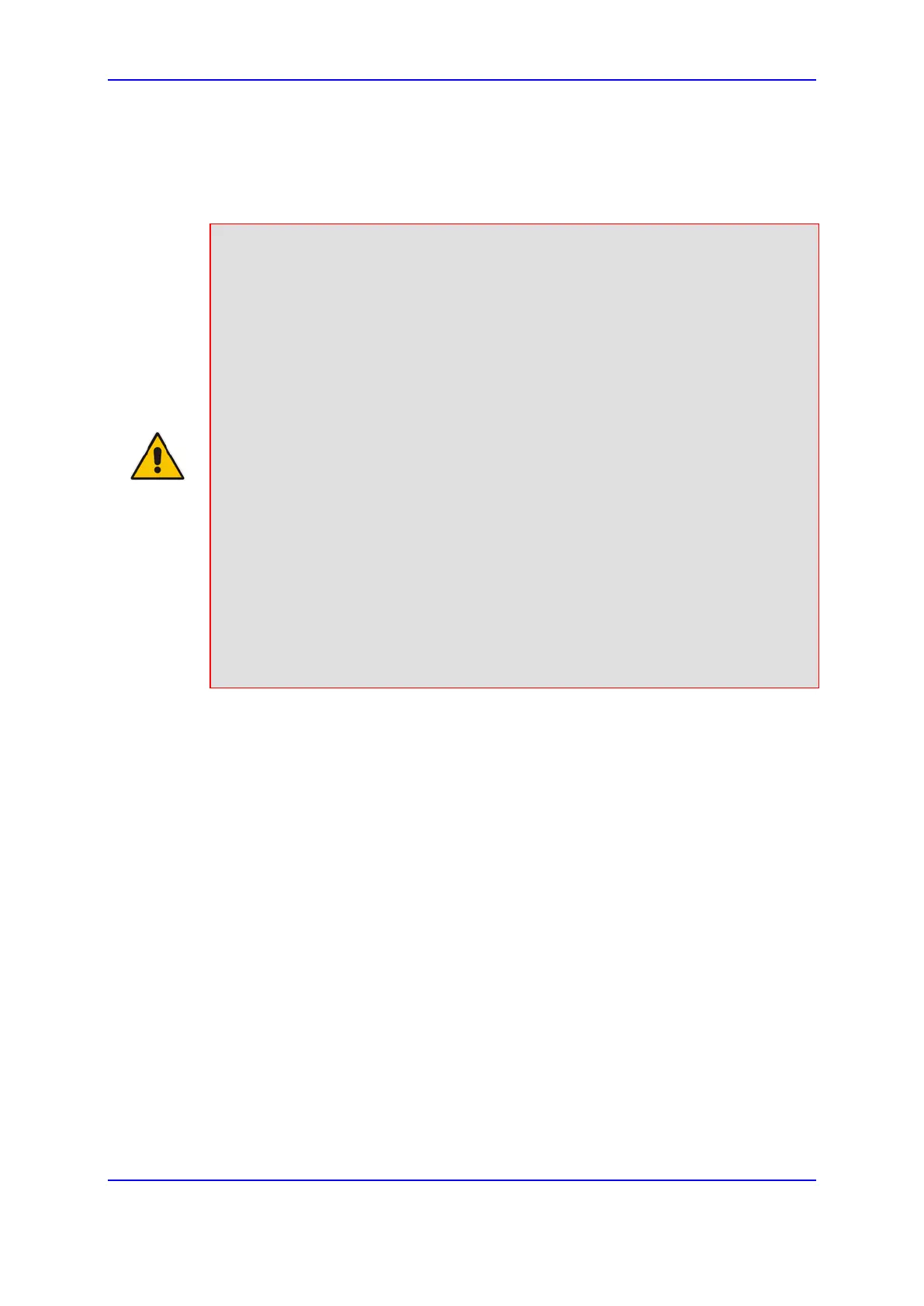Version 7.0 561 Mediant 3000
User's Manual 28. SBC Overview
5. IP Groups of the endpoints use the same SIP Interface and the SIP Interface's 'SBC
Direct Media' parameter is set to Enable When Single NAT
(SIPInterface_SBCDirectMedia = 2), and the endpoints are located behind the same
NAT.
Notes:
• If you enable direct media by the SBCDirectMedia parameter, direct media is
applied to all calls even if direct media is disabled per SIP Interface.
• Direct media cannot operate with the following features:
√ Manipulation of SDP data (offer-answer transaction) such as ports, IP address,
coders
√ Force transcoding
√ Extension Coders
√ Extension of RFC 2833 / out-of-band DTMF / in-band DTMF
√ Extension of SRTP/RTP
• All restriction features (Allowed Coders, restrict SRTP/RTP, restrict RFC 2833)
can operate with direct media. Restricted coders are removed from the SDP offer
message.
• Opening of voice channels and allocation of IP media ports are not required for
direct media.
• For two users belonging to the same SIP Interface that is enabled for direct media
and one of the users is defined as a foreign user (example, “follow me service”)
located in the WAN while the other is located in the LAN: calls between these two
users cannot be established until direct media is disabled for the SIP Interface.
The reason for this is that the device does not interfere in the SIP signaling. In
other words, parameters such as IP addresses are not manipulated for calls
between LAN and WAN (although required).
28.5.3 Restricting Audio Coders
You can configure a list of permitted (allowed) voice coders that can be used for a specific
SIP entity (leg). In other words, you can enforce the use of specific coders. If the SDP offer
in the incoming SIP message does not contain any coder that is configured as an allowed
coder, the device rejects the calls (unless transcoding is implemented whereby Extension
coders are added to the SDP, as described in Coder Transcoding on page 562). If the SDP
offer contains some coders that are configured as allowed coders, the device manipulates
the SDP offer by removing the coders that are not configured as allowed coders, before
routing the SIP message to its destination. The device also re-orders (prioritizes) the coder
list in the SDP according to the listed order of configured allowed coders.
For example, assume the following:
The SDP offer in the incoming SIP message contains the G.729, G.711, and G.723
coders.
The allowed coders configured for the SIP entity include G.711 and G.729.
The device removes the G.723 coder from the SDP offer, re-orders the coder list so that
G.711 is listed first, and sends the SIP message containing only the G.711 and G.729
coders in the SDP.
The allowed coders are configured in the Allowed Audio Coders Group table. For more
information, see ''Configuring Allowed Audio Coder Groups'' on page 591.

